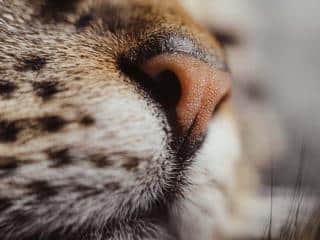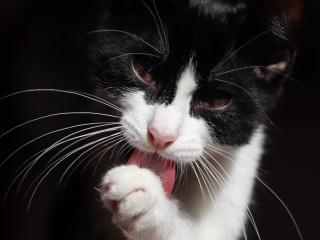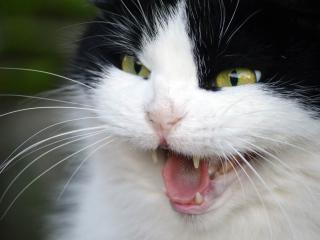

Primarily found on a cat’s snout, under its chin, above its eyes, and behind its legs, cat whiskers serve as top-notch sensory receptors.
They rank third in importance for a cat, following Jacobson’s organ for smell and pads for touch.
Whiskers, like fur, constantly shed and regrow. Dive into this article to learn how these whiskers shape a cat’s view of its world.

Deeply rooted in its skin, the ends of each whisker is surrounded by nerves and blood vessels.
They’re like antennas connecting the cat to its surroundings, sharpening every sense it has.
Acting as a trusty exploration tool, whiskers help our feline friends navigate their surroundings.
Indicating a cat’s full width, they tell the cat whether a passage is too narrow, and how to slink through, jump, play, or move in confined spaces. Especially active at night, whiskers enhance a cat’s vision, which only detects light waves in the dark. Sensing air movement helps ensuring safe movement in the dark. Always on the move, whiskers cause a cat to blink, help maintain balance, and alert the cat to potential dangers.

Cats can analyze scents to find food, track down prey, or meet a lady in heat.
To overcome its farsightedness, a cat uses its highly tactile whiskers to check if its prey is still alive before letting it go. It’s a nifty trick to avoid injuries or a lunchtime escape.

You can notice the difference when a new person or pet is introduced into the household.
It’s a bad idea. Although trimming doesn’t pose a life-threatening danger to a cat, it impairs their interaction with the environment.
Notably, mother cats often snip the whiskers of their kittens to keep them from straying too far from the nest.
Cats have between 8 to 12 whiskers on each side of their nose (not including the ones scattered over their body). Depending on the breed, these whiskers can be long and stiff, few and short (like the Devon Rex), or wavy and curly (as seen in the American Wirehair).
Avoid offering your cat food in a narrow bowl. Its whiskers might sense an obstruction, discouraging it from eating because it senses danger.